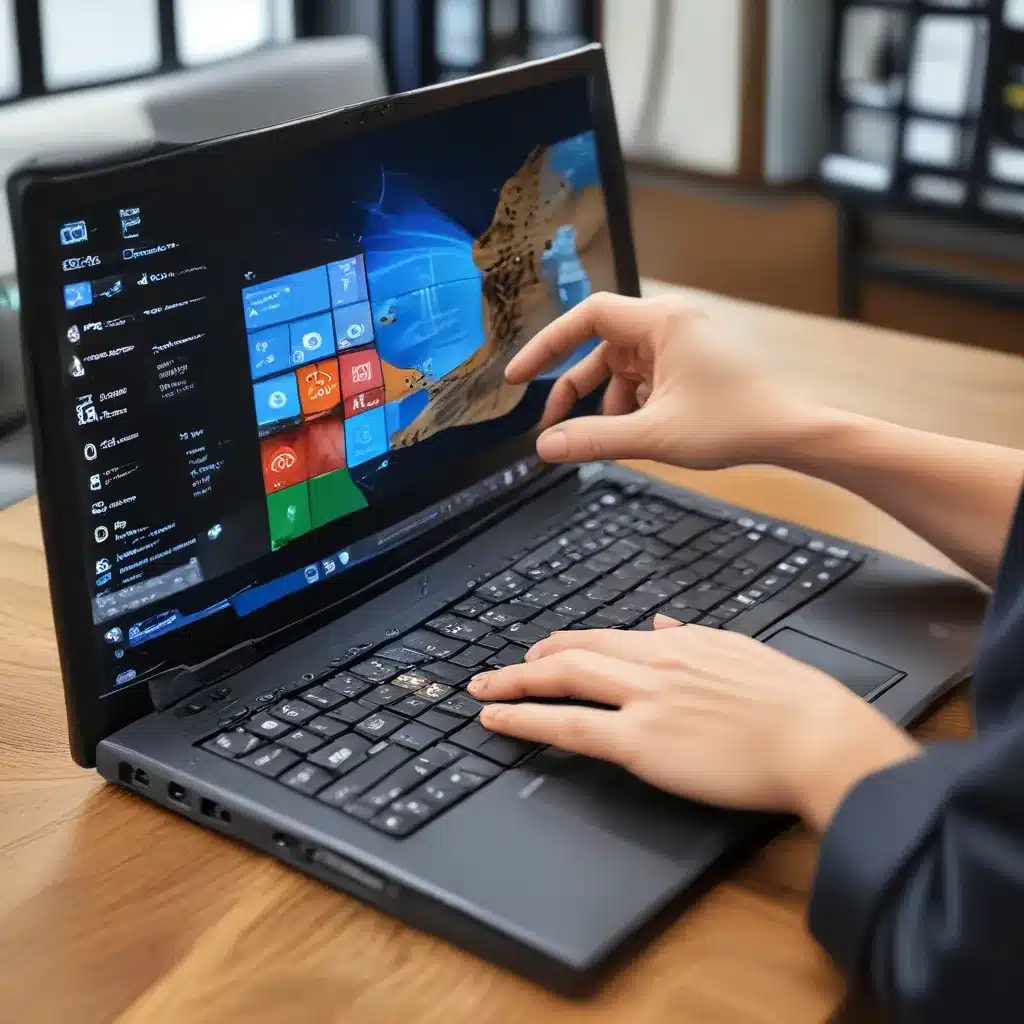
Taming the Windows Beast
As a self-proclaimed Windows enthusiast, I’ve always had a bit of a love-hate relationship with Microsoft’s flagship operating system. Sure, it’s powerful, versatile, and familiar – but goodness, can it be a finicky beast at times. Just when I think I’ve got it all figured out, Windows throws me a curveball with some janky animation or a half-baked UI element straight out of the 90s.
That’s why, when I was tasked with writing an in-depth guide on squeezing every last drop of performance out of Windows 10, I couldn’t wait to dive in. After all, if anyone knows how to tame the Windows beast, it’s this guy. So, strap in, because we’re about to embark on a journey filled with tips, tricks, and a healthy dose of sarcasm.
Mastering the Basics
Let’s start with the fundamentals, shall we? If you’re looking to breathe new life into your Windows 10 machine, the first step is to make sure you’ve got the basics covered. That means ensuring your hardware is up to snuff, your drivers are up-to-date, and you’ve got a solid anti-virus solution in place.
ITFix can help with all of that, of course. But for now, let’s focus on the software side of things. One of the first things I recommend doing is taking a long, hard look at your startup programs and background processes. Just like that drawer in your kitchen where all the random odds and ends accumulate, your Windows 10 system can quickly become bogged down with unnecessary crap.
Open up that Task Manager and start culling the herd, my friends. If you’re not actively using it, shut it down. Trust me, your system will thank you.
Tweaking the Tweaks
Alright, now that we’ve got the low-hanging fruit out of the way, let’s move on to some slightly more advanced techniques. Windows 10 is chock-full of under-the-hood settings and features just waiting to be optimized.
One area that’s often overlooked is the infamous “Game Mode.” Back in the day, Microsoft touted this as the holy grail of performance-boosting wizardry. But as some early tests revealed, it actually had the opposite effect, causing a noticeable dip in frame rates and overall system responsiveness.
Fortunately, the Windows devs have been hard at work refining this feature, and the latest iterations seem to be a bit more, well, functional. Still, I’d recommend giving it a try and seeing how it affects your specific setup. And if it ain’t broke, don’t fix it – you may be better off leaving Game Mode well enough alone.
Another area ripe for optimization is your power settings. By default, Windows 10 likes to play it safe and keep things energy-efficient. But if you’re looking to eke out every last drop of performance, you’ll want to tweak those power options to favor speed over battery life.
Head on over to the Control Panel, dive into your Power Options, and select the “High Performance” plan. You can also get granular and customize the individual settings to your heart’s content. Just be warned, this will likely come with a bit of a hit to your system’s longevity, so don’t go overboard, eh?
Diving into the Depths
Alright, now that we’ve covered the basics and the slightly less basic, it’s time to venture into the realm of the truly geeky. Prepare your eyeballs, because we’re about to get our hands dirty with some advanced Windows 10 tweaks.
First up on the chopping block: that infamous Windows 10 interface. As I mentioned earlier, Microsoft’s penchant for inconsistent UI design can be downright maddening. But fear not, my friends, for there are ways to bring a little more harmony to the madness.
One of my personal favorites is the “Dark Mode” feature. Not only does it give your eyes a much-needed break from the glaring whiteness, but it can also help improve overall system performance by reducing the amount of energy-hungry pixels being displayed.
And speaking of energy-hungry, let’s talk a bit about that GPU of yours. If you’re like me, you’re probably rocking an Nvidia card, which means you’ve got access to a whole host of performance-enhancing tools and utilities. From the venerable GeForce Experience to the more hardcore NVIDIA Control Panel, there’s a treasure trove of settings just waiting to be tweaked and optimized.
Of course, if you’re more of an AMD devotee, fear not – your Radeon software offers up a similar smorgasbord of performance-boosting goodies. Just be sure to keep those drivers updated, lest you end up with some unexpected stuttering or glitches.
Embracing the Unexpected
Now, I know what you’re thinking: “Surely, we’ve covered all the bases by now, right?” Well, dear reader, you’d be mistaken. You see, when it comes to squeezing every ounce of performance out of Windows 10, the journey never truly ends.
In fact, one of the most unexpected – and potentially game-changing – avenues for optimization lies in the world of third-party utilities and software. Take, for instance, the concept of using an external GPU to supercharge your system’s graphics prowess.
Sure, the price tag and potential performance hit might give you pause, but for those of us with a serious need for speed, it’s a solution worth considering. And who knows, maybe you’ll even stumble upon some other hidden gem that takes your Windows 10 experience to the next level.
At the end of the day, mastering the art of Windows 10 optimization is an ongoing journey – one filled with surprises, challenges, and the occasional face-palm-inducing moment. But trust me, the sense of satisfaction you’ll get from squeezing every last drop of performance out of your system is well worth the effort.
So, what are you waiting for? Grab that proverbial wrench and let’s get to work, shall we? The Windows beast is waiting.












